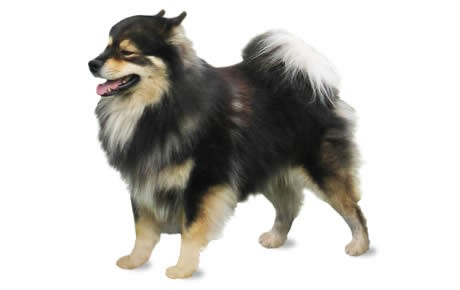Finnish Lapphund Breed Guide

Breed Group:
Herding Dogs
Get 30% off
Join our Newsletter
Sign Up Today
Finnish Lapphund Background Info and History
For centuries, the Finnish Lapphund, or Lappies as they are affectionately known, lived and worked alongside the Sami tribes of Lapland. Lapland is a region that encompasses northern Finland, Sweden, and parts of Russia. The Sami used the Finnish Lapphund to assist in hunting, as guard dogs, and eventually to herd reindeer which was a critical food source for the Sami people.
The advent of snowmobiles led to a decline in the popularity and numbers of the Finnish Lapphund. Efforts to save the breed began in earnest in Finland during the 1940s, and they have since surged in popularity in Finland. The Finnish Lapphund was only recently recognized by the AKC in 2011, and still remains a relatively rare breed in the United States.
Finnish Lapphund Temperament and Personality
Finnish Lapphunds carry many of the same personality traits of other dedicated herding dogs. They get along well with other breeds, are sociable, and good-natured. Lappies tend to be submissive towards people and in the home, but are not a shy breed.
Finnish Lapphund Training Tips
Lappies are an intelligent breed that is eager to please, making them very receptive to canine training. This breed should be trained and socialized from a young age to take advantage of the best aspects of their personality. Lappies have been demonstrated to make excellent therapy dogs.
Exercise Needs of Finnish Lapphunds
Lappies need a moderate amount of exercise if they aren’t used for herding. Daily walks or play sessions are recommended. Lappies are sensitive to heat, so owners should be careful exercising this breed in hot climates.
Finnish Lapphund Lifespan
Lappies live to be around 12-15 years old.
Finnish Lapphund Breed Popularity
Lappies are currently the 173rd most popular AKC registered breed. While they are still rare in the United States, they are significantly more popular in their native Finland.
Feeding Requirements of Finnish Lapphunds
Lappies should be fed a food source that provides a balanced nutrition and contains high-quality ingredients. The average Finnish Lapphund weighs between 33-53 lbs., so expect to feed them between 2-3 cups of dry food a day, split into two meals. Lappies that are used for herding or as a work dog may require more food.
Finnish Lapphund Grooming
The grooming process is fairly easy for Lappies. This breed must be brushed at least once a week to minimize shedding.
Are Finnish Lapphunds Good With Kids?
Lappies are good with children, but it is recommended to supervise play. If Lappies are raised alongside children and the children are taught to respect your Lappie, your dog will make an excellent playmate. Lappies are overall an excellent dog for families with children.
Common Finnish Lapphund Health Problems
Hip Dysplasia
Hip dysplasia in dogs is a common condition that affects many dog breeds, including the Finnish Lapphund. Hip dysplasia is characterized by a loose fit between the femur and pelvis in the hip assembly.
The loose-fitting connection of these two bones causes the cartilage that pads the joint to wear down unevenly over time. This leads to a buildup of scar tissue, and results in painful arthritis and increasing lameness later in your dog’s life.
Elbow Dysplasia
Elbow dysplasia in dogs is a condition where the connection between the radius and ulna, or elbow and wrist, in the front legs develops abnormally. Unlike hip dysplasia, elbow dysplasia presents at a much younger age.
Dogs suffering from elbow dysplasia will experience progressively worsening lameness in the front limbs over time. Dogs suffering from elbow dysplasia may have difficulty getting up from a prone position, may limp after exercise, have an abnormal gait, or demonstrate a reluctance towards exercise.
Cataracts
Cataracts are a condition that affects both dogs and humans alike. This condition is characterized by a cloudy or opaque appearance on the lens of the eye. At first, this cloudiness will not limit vision. However, as cataracts progress it will eventually lead to increasing loss of vision until full blindness occurs. Canine cataracts that appear early in a dog’s life tend to progress more rapidly, while cataracts that appear towards the end of a dog’s life generally progress slowly.
Progressive Retinal Atrophy (PRA)
PRA in dogs is a condition where the photoreceptor cells located in the retina of the eye degenerate over time. Photoreceptor cells are responsible for the eye’s ability to perceive light. The earliest sign of PRA is a diminished ability to distinguish objects in dim light.
Typically, this is noticeable during play time at dawn or dusk. PRA is a hereditary condition, so be sure to check with your breeder to find out if it has ever appeared in your dog’s line prior to adopting a Lappie.
Other Resources
National Breed Website: Finnish Lapphund Club of America
Rescue: Lappy Ever After





